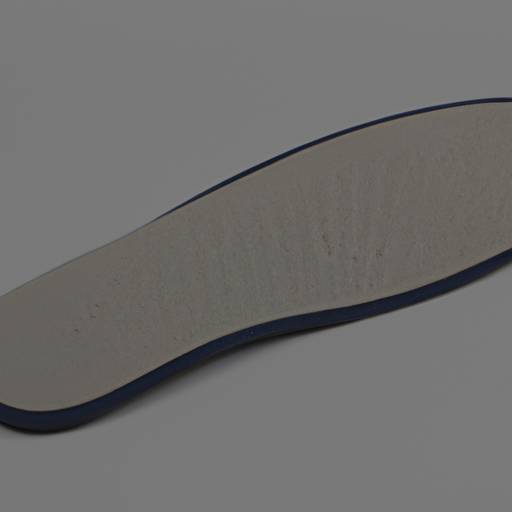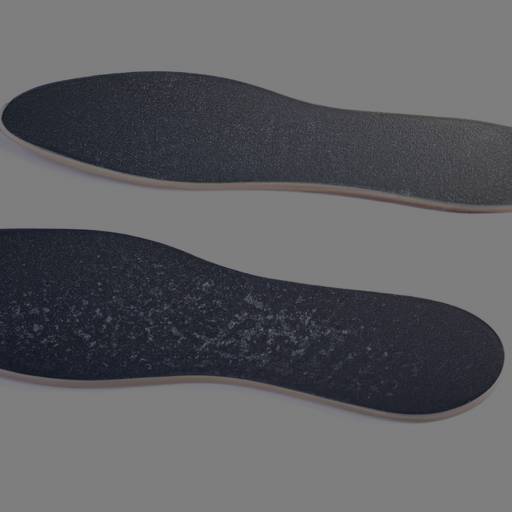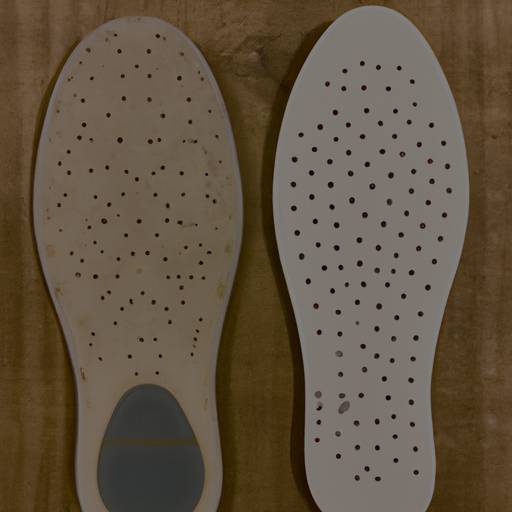Can Insoles Improve Your Vertical Leap?
The Role of Insoles in Athletic Performance
When it comes to athletic performance, every advantage counts. That’s where insoles come into play. Insoles, also known as inserts or shoe inserts, are footbeds that are placed inside shoes to provide additional support and comfort. They can make a significant difference in an athlete’s performance by improving stability, reducing discomfort, and enhancing overall foot function.
Understanding Insoles and Their Benefits
Insoles are designed to address various foot-related issues and provide specific benefits. They can help with shock absorption, arch support, improved alignment, and cushioning. These benefits can contribute to better posture, reduced risk of injuries, and enhanced performance.
One of the primary benefits of insoles is their ability to provide arch support. Proper arch support can help distribute body weight more evenly, reducing strain on the feet and lower limbs. This can be particularly beneficial for individuals with high or low arches. Insoles with arch support can help improve stability and balance during physical activities, including jumping.
Another key benefit of insoles is their impact on shock absorption. Activities like jumping can put significant stress on the feet and joints. Insoles with adequate cushioning properties can help absorb the shock from landing and reduce the impact on the body, potentially leading to a more comfortable and efficient vertical leap.
Exploring the Connection Between Insoles and Vertical Leap
The vertical leap, also known as vertical jump, is a measure of an athlete’s ability to jump vertically off the ground. It is an essential skill in various sports, such as basketball and volleyball. While insoles alone cannot guarantee an increase in vertical leap, they can play a supportive role in improving an athlete’s performance.
Insoles with proper arch support can help with alignment and stability, which are crucial for generating power and maximizing the force exerted during a jump. By providing a more stable base, these insoles can assist in maintaining proper form and technique, potentially leading to a more effective vertical leap.
Furthermore, insoles with cushioning properties can help reduce the impact on the feet and joints upon landing, allowing for a quicker recovery and potentially facilitating the ability to perform multiple jumps consecutively.
It’s important to note that while insoles can provide benefits for athletic performance, individual results may vary. Factors such as an athlete’s overall strength, technique, and training regimen also play a significant role in vertical leap improvement.
In the next section, we will explore additional factors that affect vertical leap, including biomechanics, muscular strength, and technique. Understanding these factors in conjunction with the potential benefits of insoles can help athletes make informed decisions about incorporating insoles into their training routines.
Factors Affecting Vertical Leap
Improving your vertical leap requires a combination of factors, including biomechanics of jumping, muscular strength and power, and technique and form. By understanding these elements, you can work on enhancing your performance and potentially benefit from the use of insoles.
Biomechanics of Jumping
Jumping involves a complex interaction between your muscles, joints, and connective tissues. The biomechanics of jumping primarily revolve around the force generation and energy transfer required to propel your body upward. Proper technique and alignment play a crucial role in maximizing your vertical leap.
When you jump, your muscles contract to generate force, primarily in the leg muscles such as the quadriceps, hamstrings, and calf muscles. Additionally, your glutes and core muscles provide stability and contribute to the power of the jump. The force generated by the muscles is transmitted through your joints, particularly the ankles, knees, and hips. Proper joint alignment and stability are vital for efficient force transmission and energy transfer.
Muscular Strength and Power
Muscular strength and power are key factors in achieving a higher vertical leap. Building strength in the lower body muscles, especially the muscles involved in jumping, can significantly impact your ability to jump higher. Exercises like squats, lunges, and calf raises can help strengthen the muscles involved in vertical jumping.
In addition to strength, power is essential for explosive movements like jumping. Power refers to the ability to generate force quickly. Plyometric exercises, such as box jumps and depth jumps, can help improve your power output and enhance your vertical leap.
Technique and Form
Even with adequate strength and power, the correct technique and form are essential for maximizing your vertical leap. Proper technique includes optimizing the timing and coordination of your movements to efficiently transfer force and generate power.
Key elements of good jumping technique include:
- Approach: A well-executed approach, with proper foot placement and timing, can help generate a more powerful jump.
- Takeoff: Using a quick and explosive extension of the ankles, knees, and hips during takeoff can maximize the force generated.
- Arm Swing: Proper arm swing coordination, with arms swinging in sync with the lower body movements, can contribute to the upward propulsion.
- Landing: Landing with good control and stability can help minimize the impact on your joints and reduce the risk of injury.
Improving your technique and form may require guidance from a coach or trainer who can provide feedback and help you make necessary adjustments.
While insoles alone may not directly improve your vertical leap, they can potentially complement your training by providing additional support, cushioning, and stability. Insoles with features such as arch support and impact absorption may help enhance comfort and reduce the risk of discomfort during intense jumping activities. Additionally, by promoting proper foot alignment, insoles may indirectly contribute to better biomechanics and alignment during jumps.
Remember, achieving a higher vertical leap requires a comprehensive approach that includes strength training, proper technique, and consistent practice. Insoles can be a supportive tool in your training regimen, but they should be used in conjunction with other training strategies to optimize your performance.
Potential Benefits of Insoles for Vertical Leap
When it comes to improving your vertical leap, insoles can play a role in maximizing your athletic performance. While they may not directly make you jump higher, they can provide several benefits that indirectly contribute to your vertical leap.
Arch Support and Alignment
Insoles with proper arch support can help maintain the natural alignment of your feet, which is crucial for optimal biomechanics during jumping movements. When your arches are properly supported, it helps distribute the forces evenly throughout your feet, reducing the risk of imbalances or overpronation that can interfere with your vertical leap. Individuals with flat feet or low arches may particularly benefit from insoles with arch support. Check out our article on best arch support insoles for more information.
Impact Absorption and Cushioning
The repetitive impact forces experienced during jumping exercises can take a toll on your feet and joints. Insoles with sufficient cushioning and impact absorption properties can help reduce the stress and strain on your feet, ankles, knees, and hips. By providing an extra layer of cushioning, these insoles help minimize the risk of injuries and discomfort, allowing you to focus on improving your vertical leap. For individuals seeking additional cushioning, memory foam insoles can be a suitable option.
Energy Return and Propulsion
Some insoles are designed to enhance energy return, which can potentially boost your vertical leap. These insoles often incorporate materials or technologies that absorb and store energy during the landing phase of a jump, then release it during the takeoff phase. The energy return can provide an extra burst of propulsion, allowing you to generate more power and height during your jumps.
It’s important to note that the impact of insoles on vertical leap can vary depending on individual factors such as biomechanics, muscular strength, and technique. Insoles alone may not be the sole determinant of your jumping ability, but they can contribute to overall comfort, support, and injury prevention, which are essential for optimizing your performance. When selecting insoles, consider factors such as your specific needs, foot type, comfort, and fit. For more guidance on choosing the right insoles, take a look at our article on how to pick insoles.
By incorporating insoles with appropriate arch support, impact absorption, and energy return properties, you can enhance your overall comfort and potentially improve your vertical leap. Remember to consult with a healthcare professional or a qualified specialist to determine the most suitable insoles for your specific needs and to ensure they are integrated properly into your training routine.
Types of Insoles for Vertical Leap
When it comes to improving your vertical leap, selecting the right insoles can make a significant difference. Insoles designed specifically for athletic performance can provide additional support, cushioning, and stability, ultimately enhancing your jumping ability. Let’s explore three common types of insoles for vertical leap: memory foam insoles, arch support insoles, and custom-made insoles.
Memory Foam Insoles
Memory foam insoles are known for their exceptional comfort and ability to contour to the shape of your feet. These insoles are made from a viscoelastic material that molds to the natural arches of your feet, providing personalized support and cushioning.
By evenly distributing your body weight, memory foam insoles can help alleviate pressure on your feet and joints during takeoff and landing phases of a jump. The soft and responsive nature of memory foam also absorbs impact, reducing the strain on your legs and feet.
It’s important to note that while memory foam insoles offer excellent comfort, they may not provide the same level of arch support as other types of insoles. If you require additional arch support, you may want to consider arch support insoles. Check out our article on memory foam insoles for more information.
Arch Support Insoles
Arch support insoles are specifically designed to provide support to the natural arches of your feet. These insoles help distribute weight evenly across your feet, promoting proper alignment and reducing the risk of overpronation or supination.
By maintaining proper foot alignment, arch support insoles can improve your stability and balance during jumps, allowing for a more efficient transfer of energy. This can result in increased power and a higher vertical leap.
Arch support insoles come in various designs, ranging from rigid to semi-rigid. The level of support required may vary depending on your foot type and specific needs. For more information on arch support insoles, check out our article on best arch support insoles.
Custom-Made Insoles
Custom-made insoles are individually crafted to fit the unique contours of your feet. These insoles are typically created based on a detailed analysis of your foot shape, arch type, and biomechanics.
Custom-made insoles offer the highest level of support and customization. They can address specific foot issues and provide optimal support for vertical leap performance. These insoles can help correct any imbalances or abnormalities in your foot structure, improving overall alignment and reducing the risk of injuries.
While custom-made insoles are often more expensive than other options, they are tailored to your specific needs and can offer long-term benefits. If you have persistent foot or ankle issues or are looking for the highest level of support, custom-made insoles may be worth considering.
When choosing insoles for improving your vertical leap, it’s essential to select the option that aligns with your specific foot structure, comfort requirements, and performance goals. Consider consulting with a podiatrist or a footwear specialist to determine the most suitable type of insoles for your needs.
Remember, insoles alone may not guarantee an instant increase in your vertical leap. They should be used in conjunction with proper training techniques, strength exercises, and good form to achieve the best results.
Additional Considerations
While choosing the right insoles for improving your vertical leap, there are a few additional factors to consider to ensure optimal results. These considerations include choosing the right insoles for your needs, proper fit and comfort, and incorporating insoles into your training routine.
Choosing the Right Insoles for Your Needs
When selecting insoles to enhance your vertical leap, it’s essential to choose ones that cater to your specific needs. Different types of insoles offer varying levels of support and cushioning. For individuals seeking enhanced arch support, arch support insoles may be the ideal choice. On the other hand, if you prioritize cushioning and comfort, you may opt for memory foam insoles. To find the best insoles that suit your requirements, consider factors such as your foot type, comfort preferences, and any existing foot conditions. Visit our article on best arch support insoles to explore more options.
Proper Fit and Comfort
To maximize the benefits of insoles for your vertical leap, ensuring a proper fit and comfort is crucial. Ill-fitting insoles can cause discomfort and potentially hinder your performance. It’s essential to choose insoles that match the size and shape of your shoes. Insoles that are too small or too large may not provide the intended support and can lead to discomfort. Moreover, select insoles that offer the necessary cushioning and support without compromising the overall comfort of your shoes. Remember, comfortable insoles are more likely to be worn consistently, leading to better results in the long run.
Incorporating Insoles into Your Training Routine
To truly harness the potential benefits of insoles for your vertical leap, it’s important to incorporate them into your training routine. Utilize the insoles during practice sessions, workouts, and activities that involve jumping or explosive movements. By consistently wearing the insoles during these training sessions, you can develop better stability, support, and alignment, which may contribute to improved vertical leap over time. Remember to follow a gradual progression when introducing insoles into your training to allow your body to adapt. If you experience any discomfort or pain, discontinue use and consult with a healthcare professional.
By considering these additional factors, you can optimize the use of insoles to enhance your vertical leap. Remember to choose the right insoles for your needs, prioritize proper fit and comfort, and incorporate them into your training routine consistently. While insoles can be a valuable tool in enhancing athletic performance, it’s important to complement their use with proper training techniques, strength and power exercises, and appropriate jumping form.







